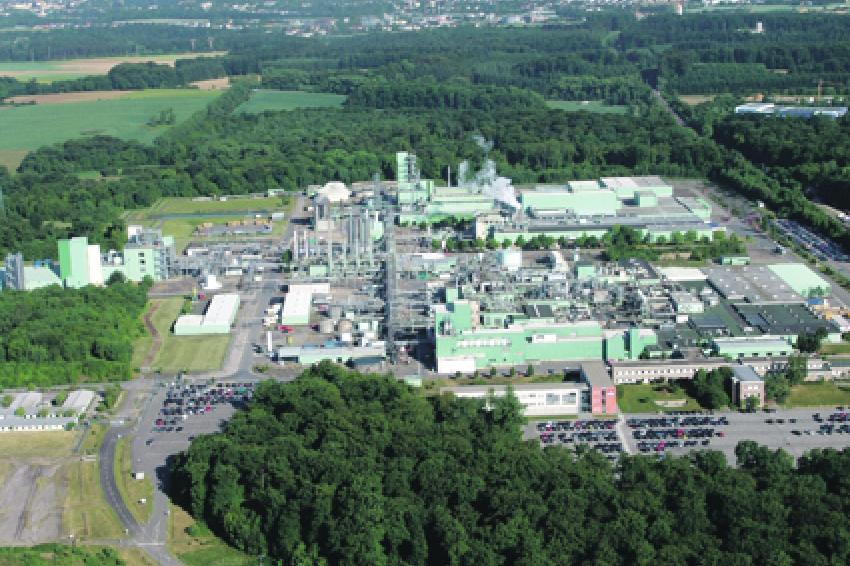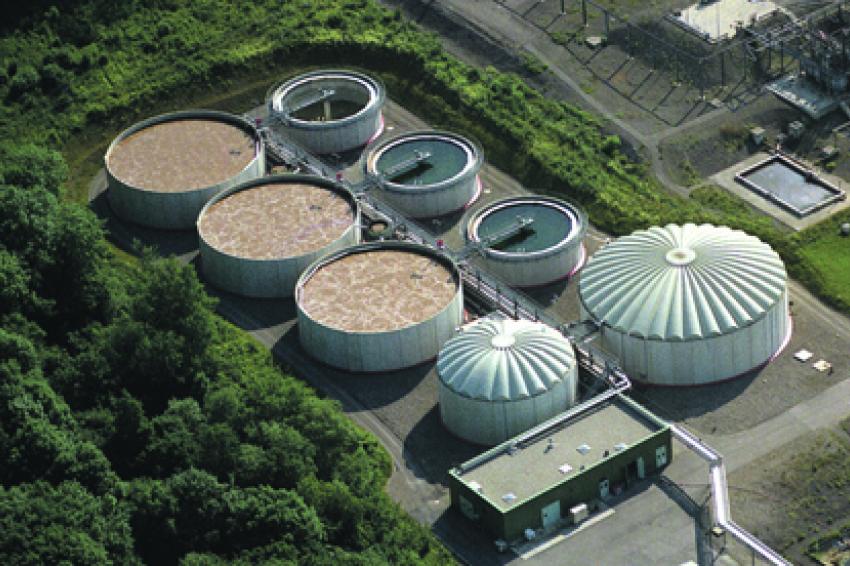Sustainability in Industrial Production
DuPont Luxembourg is One of 39 DuPont Sites Operating along Sustainable Principles in Europe
Earth-Friendly Efforts - Sustainability, as an environmental concept, is an evolving approach to the protection of our planet. Over the past two decades, global science-based products and services company DuPont has undertaken its own efforts in sustainable growth.
The company has set clear sustainability goals for its entire organization to achieve by 2015:
- Reduce greenhouse gas emissions by at least 15% from base year 2004.
- Reduce water use at sites where renewable fresh water is scarce or stressed by 30% from 2004. To hold total water use flat at all other locations.
- Ensure the entire fleet of company off-site vehicles is fuel-efficient.
- From the current 92% reduction in global air carcinogens achieved since 1990, DuPont plans an additional 50% reduction of remaining emissions by 2015. This will result in a total reduction of 96% since 1990.
- By 2015, 100% of the company's environmental efforts will be validated by independent third parties.
- Reduce energy intensity by 10% by 2020 compared with 2010. Intensity is defined as nonrenewable energy normalized by revenue.
With 60,000 employees of 80 nationalities operating in about 90 countries and manufacturing in excess of 500,000 products, this is an ambitious step.
Implementing Sustainability Goals
The goals apply to all company sites worldwide. DuPont Luxembourg, one of the company's largest investments in Europe, is no exception. Today, it employs more than 1,150 people. On 104 hectares the site runs four major production units for polyester films, spunbond fabric and elastomers producing building products, geosynthetics and spunbonded polyethylene such as DuPont Tyvek. The site also has its own power plant and wastewater treatment station with a population equivalent capacity of more than 50,000. Two big office buildings house a business center.
The Luxembourg site in 2000 had already begun focusing on improving energy efficiency, emissions and water usage, as well as biodiversity around its site. The site is Wildlife Habitat certified and was ISO 14,001 certified in 1997, but the corporate 2015 sustainability goals exceed the requirements for this certification and also national regulatory conditions.
Putting a Structure in Place
As a result, the site set up three networks. The energy, pollution prevention and waste committees meet regularly to identify new ideas and develop projects. They are peopled by a mix of product experts, engineers and managers from each of the production units. The site also has a responsible care committee composed of the site director; operations manager; and safety, health and environment professionals.
Energy Projects
In 2010 and 2011, Luxembourg's energy network set up a total of 29 energy reduction programs resulting in yearly estimated savings of more than 40,000 MWh of primary energy and annual CO2 reductions of more than 8,000 tons.
One of the big contributors to these savings was a project conducted on two of the casting lines of DuPont Teijin Films. By reducing the heating and ventilating air flow by half in one year from 210,000 m3/h to 105,000 m3/h, the Luxembourg site was able to save almost a thousand MWh in electricity, and cut down on low pressure steam to such an extent that CO2 emissions were reduced by more than 1,000 tons. Carbon dioxide emissions also were cut by recirculating hot exhaust air from H&V in the Typar production area, achieving savings of about 2,400 tons. The natural gas consumption needed to produce one ton of 12 barg steam is reduced from 71 to 65.4 Nm3/t by preheating the boiler feed-water with a heat exchanger in the exhaust gas stack.
"Although many of these programs seem minor in themselves, combined they added up to an overall 28% reduction on energy use by the end of 2011 compared to 2004," Alan Turner of the DuPont Energy Center of Competency said.
For 2012, the site has set its sights on achieving even further savings through similar projects: returning more steam condensate to the boiler feed-water tanks, recovering heat from a casting oven, installing more efficient steam jets, and using variable speed drives on compressors and pumps.
Focus On Water Reduction
Alongside the work on energy efficiency, DuPont Luxembourg has also made significant efforts to reduce its water consumption. By the end of 2011, the site had achieved a 35% reduction from 2004 levels and a 53% reduction compared with 2000. The joint venture DuPont Teijin Films was able to reduce its water consumption from 2010 levels by more than 40,000 m3 with the help of three major projects: 1) optimizing the VOC (volatile organic compound) scrubbing system, 2) modifying the DuPont Teijin Films process water feeding arrangement to achieve a more consistent temperature distribution for the various production lines and 3) replacing the polymer press so that it no longer required fresh water for cooling purposes. As a result, overall process water usage could be reduced significantly.
The Luxembourg production unit for the polyester elastomer Hytrel furthermore optimized the treatment control of the cooling tower water, which reduced process water supply to two cooling towers by more than 30,000 m3/year. The site continues to reduce water usages and is aiming for additional savings in 2012.
Pollution and Waste Control
Since 1990, DuPont Luxembourg has reduced its volatile organic compound emissions by 90%, sulphurous gas emissions by 99% and nitrous gas emissions by more than 80%. The site also set itself the goal in 2010 to recycle at least 90% of its materials rather than allow them to go to waste. That goal has been achieved through improved waste segregation in the offices and production units. Luxembourg has also reduced its overall waste output between 2008 and 2010 by almost half. Landfill was discontinued in mid-2010.
Biodiversity
DuPont Luxembourg is surrounded by woods and is located close to two communities, 1 km and 2.5 km away. This green belt is one of the rare remaining areas near Luxembourg town that are neither urbanized nor agricultural land. As a member of the Wildlife Habitat Council (WHC) since 2002, DuPont decided to enhance this land under a "Wildlife at Work" program by creating wetlands that are now well established. The site also gave four acres of land back to wildlife in 2003, and repopulated an old landfill for inert rubble with natural pioneer vegetation in 1999.
The Luxembourg site is one of 39 DuPont locations operating along sustainable principles in Europe. The company shares its experience in sustainable operations through its consulting and technology arm DuPont Sustainable Solutions, providing advice on energy efficiency, asset productivity and reliability, as well as capital effectiveness.
Contact
Dupont International Operations S.àr.l.
Chemin du Pavillon, 2
1218 Le Grand Saconnex, Geneva
Switzerland
00800 3666 6666







